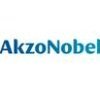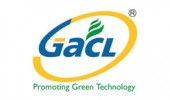Filter interviews by
Kansai Nerolac Paints Senior Officer Interview Questions and Answers
6 Interview questions
There are three main types of pigments: organic, inorganic, and metallic.
Organic pigments are carbon-based and include dyes and lakes.
Inorganic pigments are mineral-based and include iron oxide and titanium dioxide.
Metallic pigments are made from metallic compounds and include aluminum powder and bronze powder.
Acid value affects the properties of resin by indicating the amount of free fatty acids present.
Acid value measures the amount of free fatty acids in a resin, which can impact its quality and performance.
Higher acid values indicate higher levels of free fatty acids, which can lead to decreased resin stability and durability.
Lower acid values are desirable as they indicate a purer resin with fewer impurities.
Acid v...
5S is a methodology used for organizing a workplace for efficiency and effectiveness by identifying and storing items used, maintaining the area and items, and sustaining the new order.
Sort - separate needed tools, parts, and instructions from unneeded materials
Set in order - neatly arrange and identify parts and tools for easy access
Shine - clean and inspect work area and equipment regularly
Standardize - establis...
Resin is a viscous substance derived from plants or synthetic materials, used in various industries for its adhesive and protective properties.
Resin can be natural or synthetic
It is commonly used in the production of adhesives, varnishes, and coatings
Examples of natural resins include pine resin and amber
Examples of synthetic resins include epoxy and polyester resins
Resin is a viscous substance used for various purposes such as adhesives, coatings, and casting.
Resin is commonly used in the production of adhesives and coatings for various surfaces.
It is also used in the casting of jewelry, sculptures, and other decorative items.
Resin can be made from natural sources such as trees or synthetic materials.
It is known for its durability, strength, and resistance to moisture and ch...
Kaizen is a Japanese business philosophy of continuous improvement, while 5S is a methodology for organizing a workplace for efficiency and effectiveness.
Kaizen focuses on making small, incremental improvements in processes and systems.
5S stands for Sort, Set in order, Shine, Standardize, and Sustain.
Example of 5S: organizing tools in a designated area, labeling items for easy identification, and regularly cleanin...
Kansai Nerolac Paints Senior Officer Interview Experiences
11 interviews found
I applied via Naukri.com and was interviewed in Apr 2024. There were 2 interview rounds.
GK, GI, Arithmetic, Technical
(3 Questions)
- Q1. About yourself & General
- Q2. About experience
- Q3. Salary discussion
I applied via Recruitment Consulltant and was interviewed before Nov 2023. There were 2 interview rounds.
(2 Questions)
- Q1. Basic questions regarding domain
- Q2. Expertise & current roles
(2 Questions)
- Q1. In detail about demand & supply planning
- Q2. Forecasting & inventory related questions
(1 Question)
- Q1. How many types of pigment
- Ans.
There are three main types of pigments: organic, inorganic, and metallic.
Organic pigments are carbon-based and include dyes and lakes.
Inorganic pigments are mineral-based and include iron oxide and titanium dioxide.
Metallic pigments are made from metallic compounds and include aluminum powder and bronze powder.

Technical and development
(1 Question)
- Q1. Related sealer development
I applied via Recruitment Consulltant and was interviewed in Apr 2023. There were 3 interview rounds.

Math, Reasoning, GK,GS
(1 Question)
- Q1. Depth question , Technical aspects all
Interview Preparation Tips
I applied via Recruitment Consulltant and was interviewed in Feb 2023. There were 2 interview rounds.

(3 Questions)
- Q1. Tell me about yourself
- Q2. What you know about resin
- Ans.
Resin is a viscous substance derived from plants or synthetic materials, used in various industries for its adhesive and protective properties.
Resin can be natural or synthetic
It is commonly used in the production of adhesives, varnishes, and coatings
Examples of natural resins include pine resin and amber
Examples of synthetic resins include epoxy and polyester resins
- Q3. Do you know 5S
- Ans.
5S is a methodology used for organizing a workplace for efficiency and effectiveness by identifying and storing items used, maintaining the area and items, and sustaining the new order.
Sort - separate needed tools, parts, and instructions from unneeded materials
Set in order - neatly arrange and identify parts and tools for easy access
Shine - clean and inspect work area and equipment regularly
Standardize - establish sch...
Interview Preparation Tips
I applied via Referral and was interviewed in Oct 2022. There were 3 interview rounds.

Like maths, reasoning, variable question 30to 40 question
(2 Questions)
- Q1. Confirm about your technical exp
- Q2. What is your job profile
Interview Preparation Tips
I appeared for an interview before Apr 2024, where I was asked the following questions.
- Q1. Powder coating related
- Q2. Knowledge about PT. & market
Interview Preparation Tips
I applied via Recruitment Consulltant and was interviewed before Aug 2022. There were 2 interview rounds.

(3 Questions)
- Q1. Tell me about your self
- Ans.
Experienced Senior Officer with a strong background in leadership, strategic planning, and team development in diverse environments.
Over 10 years of experience in leadership roles, managing teams of up to 50 individuals.
Successfully led a project that increased operational efficiency by 30% through process optimization.
Skilled in strategic planning, having developed and implemented a 5-year growth strategy that resulte...
- Q2. What is kaizen and 5S
- Ans.
Kaizen is a Japanese business philosophy of continuous improvement, while 5S is a methodology for organizing a workplace for efficiency and effectiveness.
Kaizen focuses on making small, incremental improvements in processes and systems.
5S stands for Sort, Set in order, Shine, Standardize, and Sustain.
Example of 5S: organizing tools in a designated area, labeling items for easy identification, and regularly cleaning wor...
- Q3. How acid value effect on resin
- Ans.
Acid value affects the properties of resin by indicating the amount of free fatty acids present.
Acid value measures the amount of free fatty acids in a resin, which can impact its quality and performance.
Higher acid values indicate higher levels of free fatty acids, which can lead to decreased resin stability and durability.
Lower acid values are desirable as they indicate a purer resin with fewer impurities.
Acid value ...
Interview Preparation Tips
I applied via Naukri.com and was interviewed before Apr 2022. There were 2 interview rounds.

(2 Questions)
- Q1. Ask about resins and its reaction and basic knowledge of it
- Q2. What is use of resin?
- Ans.
Resin is a viscous substance used for various purposes such as adhesives, coatings, and casting.
Resin is commonly used in the production of adhesives and coatings for various surfaces.
It is also used in the casting of jewelry, sculptures, and other decorative items.
Resin can be made from natural sources such as trees or synthetic materials.
It is known for its durability, strength, and resistance to moisture and chemica...
Top trending discussions






Kansai Nerolac Paints Interview FAQs
Tell us how to improve this page.
Kansai Nerolac Paints Interviews By Designations
- Kansai Nerolac Paints Teritory Sales Officer Interview Questions
- Kansai Nerolac Paints Senior Officer Interview Questions
- Kansai Nerolac Paints Officer Interview Questions
- Kansai Nerolac Paints Sales Officer Interview Questions
- Kansai Nerolac Paints Production Officer Interview Questions
- Kansai Nerolac Paints Territory Sales Executive Interview Questions
- Kansai Nerolac Paints Technical Officer Interview Questions
- Kansai Nerolac Paints Customer Service Associate Interview Questions
- Show more
Interview Questions for Popular Designations
Overall Interview Experience Rating
based on 12 interview experiences
Difficulty level
Duration
Senior Officer Interview Questions from Similar Companies
Kansai Nerolac Paints Senior Officer Reviews and Ratings
based on 48 reviews
Rating in categories
|
Teritory Sales Officer
285
salaries
| ₹4.4 L/yr - ₹10.4 L/yr |
|
Production Officer
261
salaries
| ₹3.6 L/yr - ₹7.2 L/yr |
|
Area Sales Manager
220
salaries
| ₹13.4 L/yr - ₹23.5 L/yr |
|
Senior Officer
213
salaries
| ₹5.5 L/yr - ₹11 L/yr |
|
Territory Sales Executive
203
salaries
| ₹5.2 L/yr - ₹12 L/yr |

Berger Paints

Pidilite Industries

SRF

AkzoNobel
- Home >
- Interviews >
- Kansai Nerolac Paints Interview Questions














